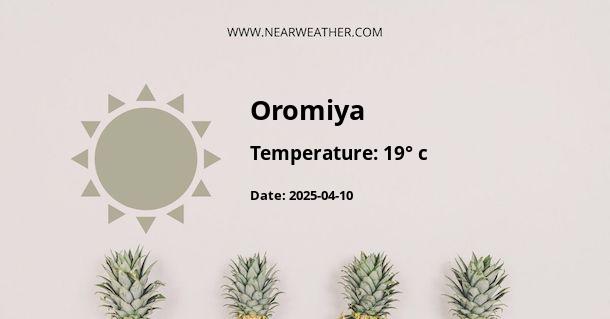Oromīya Kilil, Ethiopia: Climate and Weather Year Round
Oromīya Kilil is a region located in Ethiopia, known for its diverse landscapes and rich cultural heritage. Understanding the climate and weather patterns in this region is essential for both residents and visitors. In this article, we will explore the climate and weather conditions in Oromīya Kilil throughout the year, providing detailed information and insights.
Geographical Features
Oromīya Kilil is situated in the central part of Ethiopia, covering a vast area that includes both highlands and lowlands. The region is characterized by a diverse topography, including mountains, plateaus, and valleys. The presence of the Great Rift Valley in the eastern part of the region adds to its geographical diversity. These geographical features play a significant role in shaping the climate and weather patterns in Oromīya Kilil.
Seasonal Climate
Oromīya Kilil experiences two distinct seasons: a dry season and a rainy season. These seasons are influenced by the region's proximity to the equator and its elevation. Let's take a closer look at each season:
Dry Season (October to February)
The dry season in Oromīya Kilil typically starts in October and extends until February. During this period, the region experiences minimal rainfall, and the weather is generally dry and sunny. The average temperature ranges from 20°C to 28°C (68°F to 82°F), making it comfortable for outdoor activities and exploration. It is advisable to carry sunscreen and stay hydrated due to the high temperatures and low humidity.
The dry season is an excellent time to visit Oromīya Kilil if you prefer warm and sunny weather. It is also an ideal time for hiking and exploring the stunning landscapes of the region.
Rainy Season (March to September)
The rainy season in Oromīya Kilil typically starts in March and lasts until September. During this period, the region experiences significant rainfall, making it lush and green. The average temperature ranges from 15°C to 25°C (59°F to 77°F), providing a cooler and more comfortable climate compared to the dry season.
The rainy season is an excellent time to witness the region's natural beauty, as the landscape comes alive with vibrant colors and blooming flowers. However, it is essential to be prepared for occasional heavy rainfall and muddy roads in certain areas.
Annual Climate Overview
Now, let's delve into a more detailed overview of the climate in Oromīya Kilil throughout the year:
| Month | Temperature (°C) | Rainfall (mm) |
|---|---|---|
| January | 21 | 6 |
| February | 23 | 10 |
| March | 23 | 38 |
| April | 22 | 91 |
| May | 21 | 102 |
| June | 20 | 139 |
| July | 19 | 195 |
| August | 19 | 175 |
| September | 19 | 114 |
| October | 20 | 29 |
| November | 21 | 10 |
| December | 21 | 5 |
The table above provides a monthly breakdown of the average temperature and rainfall in Oromīya Kilil. During the rainy season (March to September), the region receives a significant amount of rainfall, with the highest precipitation occurring in July. The dry season (October to February) experiences much lower rainfall, with the lowest precipitation levels in December and January.
Local Climate Influences
Several factors influence the climate and weather patterns in Oromīya Kilil:
Elevation
Due to its diverse topography, Oromīya Kilil experiences variations in climate and temperature based on elevation. The highland areas generally have cooler temperatures, while the lowland regions tend to be warmer. This variation allows visitors to experience different climates and landscapes within the same region.
Topography
The presence of mountains, plateaus, and valleys in Oromīya Kilil affects the distribution of rainfall. The mountains act as barriers, causing the moist air to rise and condense, resulting in more rainfall on the windward side. In contrast, the leeward side of the mountains experiences less rainfall and drier conditions.
The Great Rift Valley
The Great Rift Valley, running through the eastern part of Oromīya Kilil, influences the climate in the region. The valley's low-lying areas create a microclimate characterized by higher temperatures and lower rainfall. This unique climate contributes to the region's diverse ecosystems and agricultural practices.
Conclusion
Oromīya Kilil's climate and weather are shaped by its geographical features, elevation, and proximity to the equator. The region experiences a dry season from October to February, with high temperatures and minimal rainfall, and a rainy season from March to September, characterized by cooler temperatures and significant rainfall. Visitors can enjoy the region's natural beauty and diverse landscapes throughout the year, with each season offering a unique experience. Whether you prefer warm and sunny weather or lush greenery, Oromīya Kilil has something to offer for everyone.
A - Oromiya's Latitude is 8.000000 & Longitude is 39.000000.
A - Weather in Oromiya is 19° today.
A - Climate Conditions in Oromiya shows scattered clouds today.
A - Humidity in Oromiya is 29% today.
A - Wind speed in Oromiya is 8.35 km/h, flowing at 65° wind direction. today.
